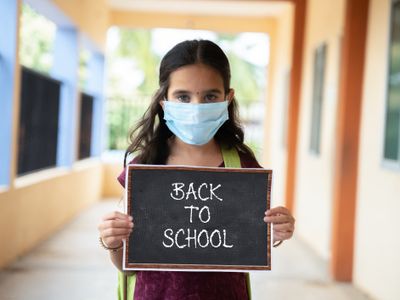The pandemic has thrown the school system out of
gear across the country and there seems to be no end
to the ordeal of the young students, parents and teachers.
Different states have, over the past nearly two years,
tried out their own variations to attend to the challenges,
but the results have been mixed. There is a broad
consensus though that projecting online learning as a
substitute to physical attendance puts a vast majority
at a clear disadvantage. The digital divide is stark and
its repercussions have been brutal. Amidst the third
wave, the day Maharashtra reopened schools while
making it clear that there was no compulsion to attend
elsewhere in the country. In normal circumstances, such
a resounding encore for education would warrant
celebratory reactions, but Covid-19 is a different beast.
Having to choose between the safe health of students
and their education is a tough ask. Opinions on whether
or not to open schools remain divided, despite surveys
and field reports indicating how learning levels have been
impacted because of schools being shut. Reading and
numeracy skills have taken a big hit, especially among
students in primary classes and in rural
areas.Immunisation for those above 15 commenced on
January 3 and discussions around reopening now centre
around speeding up inoculation in this age group. The
aim is to vaccinate all the eligible teenagers in due course.
A wait-and-watch policy is a prudent choice, for now, as
the number of Covid-positive cases sees a gradual decline.
There is no denying the loss suffered by children, but
well-being is a crucial aspect of life. Opening schools
and conduct of offline classes and examinations should
be the way forward once the immediate threat reaches a
low threshold level, as it did after the devastating second
wave.
According to a UNICEF report,more than 616 million
students remain affected by partial or total school
closures globally. Children have lost basic numeracy and
literacy skills. In low- and middle-income countries,
learning losses to school closures have left up to 70
percent of 10-year-olds unable to read or understand a
simple text, up from 53 percent pre-pandemic. School
closures have also impacted children’s mental health,
reduced their access to a regular source of nutrition,
and increased their risk of abuse. A growing body of
evidence shows that Covid-19 has caused high rates of
anxiety and depression among children and young
people, with some studies finding that girls, adolescents,
and those living in rural areas are most likely to
experience these problems.











More Stories
Columbia University aakes back Deadline set for Protesters to Leave Campus
BJD Releases List of 3 Candidates for Odisha Assembly Elections
Low vision clinic inaugurated at AIIMS Bhubaneswar